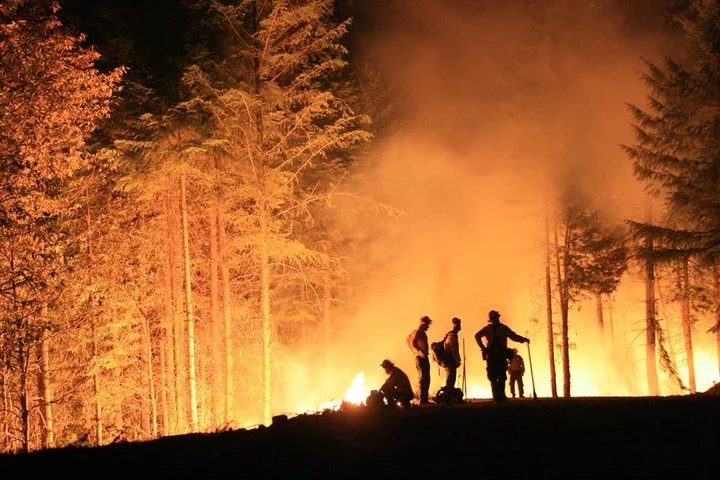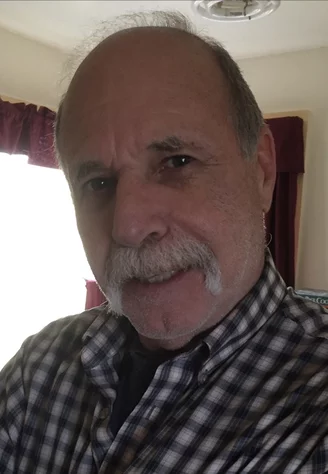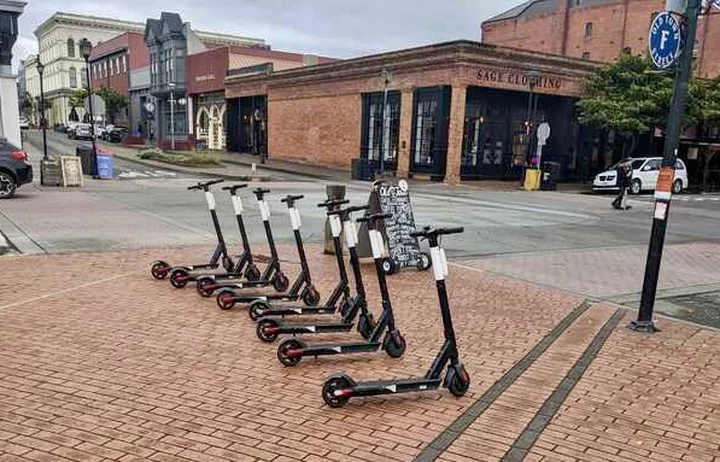GUEST OPINION: We’re Old as Hell, and We’re Not Going to Take it Anymore! Humboldt County Needs to Get its Act Together to Support a Rapidly Aging Population
Cindy Shepard / Wednesday, May 24, 2023 @ 8:08 a.m. / Opinion
In 2017, Humboldt County had 34,545 citizens over 60 years old – senior citizens, if you will. In 2020, there were 36,080. In 2022, the number rose to 38,207.
The population of Humboldt County is aging. And aging takes a toll on the body.
As our population grows older, the services required are becoming more and more scarce. In 2021-22, there were 272 physicians in Humboldt County. Only 67 of those were primary care physicians. That means each primary care physician is taking care of about 570 elderly patients in addition to infants, children, and other adults.
I have chronic illnesses and am disabled. I am one of the fortunate ones that has insurance, support from my family, and a long-term nurse practitioner to act as my primary care. Recently, they referred me to four local doctors for tests, pain and injuries. One of these referrals was able to schedule me for a test. Their first available appointment was in September. Two other offices have told me that they received the referrals but couldn’t estimate when I might be seen. Their schedules are full; they will call me when they can make me an appointment. One of the offices denies receiving the referral, even though my primary says they have faxed it to them twice. I do not know when I will receive the care I need.
Recently, a friend of mine had a concerning lab result and was told they would need further testing to rule out cancer. However, the first appointment they could get for the additional testing was three months out. Imagine three months of waiting to see whether you had cancer or not.
Being disabled comes with its own issues. I would challenge every business owner and store manager to navigate the aisles of their stores, restaurants and offices as if they were physically disabled. Can you reach the top and bottom shelves while using a mobility aid – walker, cane, crutches, wheelchair? Are there sufficient riding carts for people to use? Will those riding carts fit down the aisles and take corners without knocking over product? Are your bathrooms ADA compliant? Can a customer in a wheelchair navigate between tables in a restaurant? In a theatre? An office building?
Some of these issues are not covered by law. For instance, stores are not required to provide riding carts. However, if an aging population cannot comfortably and reliably use your business, they will go elsewhere. That means more online shopping and more home delivery, which leads to less money in the local economy.
It also means that older people are becoming more isolated. And being isolated can lead to more injuries and illnesses. And so the circle turns again, to the fact that there is insufficient health care in our county.
Humboldt County is a wonderful place. I feel fortunate to have been raised here and continue to be glad that I can live in such a beautiful place. But I often feel forgotten and neglected. As society works towards inclusion for all its members, please don’t forget that you will also be old one day. Is this the future you want? Will your needs be provided for?
Is this the best that Humboldt can do?
BOOKED
Yesterday: 8 felonies, 6 misdemeanors, 0 infractions
JUDGED
Humboldt County Superior Court Calendar: Friday, Jan. 2
CHP REPORTS
No current incidents
ELSEWHERE
RHBB: Driver Trapped After Seizure Reportedly Leads to Crash at Fourth and I Streets in Eureka
Mad River Union: APD: Arcata declares State of Emergency
Firefighters’ Mental Health Is at Risk. A California Bill Could Help.
Julie Cart / Wednesday, May 24, 2023 @ 7:59 a.m. / Sacramento
File photo: U.S. Forest Service.
A state Senate bill that would expand workers’ compensation coverage for California first responders experiencing post traumatic stress — aimed at addressing what Cal Fire officials call a mental health crisis — has cleared its first legislative hurdle and been sent to the Assembly.
Authored by Sen. John Laird, a Salinas Democrat, the bill is one of a growing number of state initiatives attempting to address the cause of mental health struggles and the difficulty first responders encounter when seeking medical care through state-run insurance.
The bill would extend by seven years a provision in existing state law that says PTSD qualifies as an occupational illness that is covered by workers’ comp for firefighters, police and other first responders. The extension would last through Jan 1, 2032, rather than expiring in 2025. The bill also would add more categories of dispatchers, peace officers, investigators and public security officers in claims for psychological injury.
“Trial by Fire,” a series of CalMatters stories published last summer, revealed how overwork and distress from intensifying wildfires have left Cal Fire crews with increasing PTSD, suicidal thoughts and other mental health problems. Cal Fire Director Joe Tyler told CalMatters that the department faced a mental health crisis and called it his top priority.
Cal Fire does not track suicides or PTSD among its ranks, but many firefighters and their supervisors told CalMatters that the problems are rampant, and described their trauma in detail. Stress from long hours and dangerous work triggers health problems, excessive drinking, drug use and marital discord among firefighters, experts say.
Laird said the CalMatters series “set the context” for his bill and other efforts to address the mental health crisis among first responders. The state has already agreed to a union contract that would reduce Cal Fire firefighters’ 72-hour workweeks to 66 hours beginning in late 2024.
The state firefighters’ union has long called for legislators to plug gaps in workers’ comp coverage that make it difficult for them to receive robust mental health care coverage.
This bill, SB-623, would be a first step toward doing that. But some issues facing first responders are more nuanced and difficult to legislate: encouraging them to report their struggles, while ensuring that their jobs are not threatened. And expanding Cal Fire’s accountability and improving its data reporting, while maintaining individuals’ medical privacy.
The bill “moves things in the right direction,” said Tim Edwards, president of Cal Fire Local 2882. “We support any bill that would bring awareness and funding to help fight the growing number of calls for help.”
Edwards added that other core issues, such as work hours and the lack of treatment centers for mental health issues, still need to be addressed.
The bill passed the Senate on a floor vote of 35-0 on Monday and now moves to the Assembly.
Laird said state officials are reluctant to write checks to fix a problem they cannot quantify, making it critical that first responders share their PTSD experiences with legislators as evidence of the extent of the issue.
“The difficulty has been that the governor wants to know that this is, in fact, necessary,” he said. “We are working with professional firefighters to compile data and first-hand stories. Our goal is to demonstrate that this is vital. That was the thing that was missing, the data.”
Laird said lobbying efforts from the first responders groups were effective because they included personal stories from workers suffering from PTSD and other mental health illnesses. “It makes a difference,” he said. “People can relate.”
The proposed legislation recognizes the stress experienced by dispatchers and 911 operators who may not witness accidents or fires but nonetheless experience trauma and may want to seek counseling.
To qualify for workers’ comp coverage under existing law, a mental health disorder must be diagnosed and cause a disability or need for medical treatment, and the employee must “demonstrate by a preponderance of the evidence” that on-the-job events were the main cause.
Opposition to the bill comes from a coalition of workers’ comp organizations and the state Association of Counties. They say psychological problems are difficult to diagnose and their origins tricky to pinpoint, setting a high bar to ascribe trauma and PTSD as a workplace injury.
“There is no objective basis to evaluate the operation of current law, the need for this expansion, or the impact of stripping away protections for taxpayer funded public entities,” the group told the Senate.
According to an analysis by the Senate Appropriations Committee, “extending coverage of presumptive injuries…would likely result in increased workers compensation costs. The magnitude is unknown.”
The bill’s sponsors are the California Chapter of the National Emergency Number Association, the California Professional Firefighters, the California Statewide Law Enforcement Association and the Peace Officers Research Association of California.
In remarks submitted to the Senate, California Professional Firefighters, which represents state and local fire agencies, said occupational stress among their ranks is well-documented, and that “repeated and chronic exposure to traumatic events and critical incidents increases the risk for post-traumatic stress and other stress-induced symptoms.”
###
CalMatters.org is a nonprofit, nonpartisan media venture explaining California policies and politics.
OBITUARY: Brian Harper, 1957-2023
LoCO Staff / Wednesday, May 24, 2023 @ 6:56 a.m. / Obits
Brian
Harper died unexpectedly, with loved ones at his side, on Friday,
April 28, 2023. Brian was born on August 25, 1957 to James and Eileen
Harper. His childhood was spent in Allenhurst, New Jersey with his
five siblings. After graduating from Ocean Township High School,
Brian bought a one way ticket to California. He never looked back! He
spent time with his brother Kevin in Santa Cruz, and also with his
brother Jim in Florida. After his stint in Florida he made a decision
to get back to California and ended up in the Kettenpom area, where
he married Lynne Stephens and his beloved son Zuma was born.
Brian
and Zuma were devoted to one another, working together at Brian’s
business and living on adjacent properties. When Brian was diagnosed
with cancer a few months ago, Zuma made his Dad’s comfort and care
his highest priority.
Brian owned and managed Specialized Woodworks, which he established on the premises of Dazey’s Supply in 1986. His growing business brought him to larger quarters in Redway. A highly skilled artisan, Brian created specialty cabinetry and custom woodwork pieces, and installed kitchens as well as commercial and domestic infrastructure. Many homes and businesses in our area display the results of his design and skill. Brian used his business as a nexus for community development, generously donating to many community and nonprofit events and productions. He got along very well with our community’s younger generations, and made himself and his workshop available for youth work experience programs, involving South Fork High School students who were interested in woodworking, guiding them toward good work habits, and sharing his skills as a fine craftsman.
Brian was dedicated to the idea of personal participation in building our community. He was a longtime volunteer at People Productions and the Mateel Community Center’s Reggae on the River, working with Roger Safier, who became one of his close friends. Brian was great friends with David Thomas and Karyn Lee Thomas and the late Harold Mendes, and Harold brought Brian into Rotary. Brian became President and service co-chair of the local Rotary in 2013-14. He was proud of his Paul Harris Plus-One status in the organization, which is awarded for philanthropic and service contributions. Brian’s longtime dear friend Peter Connolly brought him into the Redway Volunteer Fire Department, where he was trained by Ernie Branscomb. Brian’s natural leadership abilities brought him to the position of Assistant Chief, a position he held until his retirement in 2022. Brian gave many years of service as a volunteer and board member at Heart of the Redwoods Community Hospice. He was one of the famous Flaming Chefs of our hospice’s Taste of the Cove, Barbeque and Brew and other events. He was always one of the earliest to arrive, setting up tent pavilions and tables, starting the barbeques and cooking the food, and was always one of the last to leave after taking down and stowing all the equipment. He hosted and participated in Thursday Night Poker with a multi-generational group of friends, a regular gathering that took place for decades.
Brian’s dear friend and companion Randalyn Perkins introduced him to the adventures of international travel, and they enjoyed many trips in the company of close friends, including Karyn Lee Thomas and David Thomas, Brian and Robin Elie, Peter and Debby Connolly, and others, visiting Argentina, Brazil, France, Greece, Italy and South Africa with them. In their company, he learned to appreciate fine wines and the best quality liquors, which he enjoyed for the rest of his life. He loved his visits to Mexico and returned to that culture many times over the years.
Brian was the center of a circle of companions, many of whom developed their own connections through their relationship with him. A person of great charm and charisma, Brian loved to laugh and was famous among his friends for his dry wit. His smile could light up a room. He had a gift for making people feel valued and recognized. No matter where Brian was on any day, whether it was Specialized Woodworks, Signature Coffee, or his favorite restaurant, the Lost Frenchman, people would stop by for a chat.
Brian is survived by his beloved son Zuma, and his siblings Kevin, Doug, Joann and John and their families. He was a favorite with his many nieces and nephews. He was preceded in death by his oldest brother Big Jim and his parents. Brian’s extended family includes Kathleen, Josh, Laura and Selena Sweet; Stephen Dazey; his dear friends Keith Gifford and his wife Kazumi and their daughter Namiko; Peter, Debby and the Connolly family; David Thomas and Karyn Lee Thomas; Roger Safier; Randalyn, Jake and Aaron Perkins; Brian and Robin Elie; his long time neighbors in the Kettenpom area and Redway, and throughout Southern Humboldt and beyond, more friends than can be named. We will miss him for the rest of our lives.
A public memorial and celebration of the life of our cherished friend and community member will take place from 1 p.m. to 5 p.m. on Saturday, June 10 at a location near Garberville. Light fare, non-alcoholic beverages and mixers will be provided; you are invited to bring your own alcoholic beverage to share. Brian never said “no” to dessert, and guests are invited to bring a potluck dessert to honor that sweet tooth. Volunteers to help with different parts of the memorial will be gratefully welcomed. Please text (707) 923-2890 to RSVP, let us know the number of attendees in your party, whether you can join a crew, and to receive directions.
###
The obituary above was submitted on behalf of Brian Harper’s loved ones. The Lost Coast Outpost runs obituaries of Humboldt County residents at no charge. See guidelines here. Email news@lostcoastoutpost.com.
OBITUARY: Edmond ‘Tooter’ Ray Thompson, 1951-2023
LoCO Staff / Wednesday, May 24, 2023 @ 6:56 a.m. / Obits
Edmond “Tooter” Ray Thompson
June 15, 1951 - April 17, 2023
On April 17, 2023 at 1:30 p.m. we had to bid farewell to our loving husband, father, grandfather, uncle, and friend Edmond Ray Thompson (better Known as “Tooter”). Tooter passed away peacefully surrounded by family at Providence St. Joseph Hospital in Eureka.
Tooter was born on June 15, 1951 in Ouachita, Louisiana and he moved to McKinleyville at the age of 3 with his mother and four siblings. He spent most of his childhood hunting, fishing, skating and riding bikes with friends. In 1970 at around age 19 he began working for Simpson Timber Company pulling green chain until eventually operating a forklift; which remained his position until he retired at the age of 62 in June of 2013.
Through a majority of his adult life Tooter spent his time away from work hanging at the local bars acting somewhat rowdy with his brothers and pals brawling with any and all who came knocking for trouble. He also enjoyed fishing the ocean very much for halibut, lingcod, rockfish, salmon, etc… pretty much if you can name it he liked to catch it. He would even make a few trips to Alaska to chase the halibut and salmon of the last frontier. Tooter was also very passionate about hunting each season: stomping through the woods or driving through the hills with his son, nephews, and pal Danny searching for that next buck to fill the freezer. In his later years these drives would come to be his favorite pastime and he loved every minute he spent off the grid just searching for wildlife.
In 1979 Tooters daughter Toni was born. Then in 1980 he married the love of his life, his wife Tina, and his son Jared was born in 1989. Soon after the birth of his son his rowdy ways mellowed and he focused on spending time with family and teaching his son those life lessons that his son still uses to this day.
Tooter was preceded in death by his mother Adele, sister Olafey, and four brothers Hilton, Connie, Morris, and Donald. He is survived in death his brother Wayne, his three sisters Wander, Gloria, and Imagene, his wife Tina, son Jared, Daughter Toni, Granddaughters Meghan, Nicole, and Krista, and multiple nephews nieces in laws and many, many friend around the county and afar. If you knew Tooter his friends were his family as well.
There will be a small celebration of life potluck at the Moose Lodge in McKinleyville on June 10, 2023 from 2 p.m.-4 p.m. in the picnic area in the back. All are welcome so come pay your respects, bid your farewell, and have a good time remembering Tooter for the wonderful person he truly was.
###
The obituary above was submitted on behalf of Tooter Thompson’s loved ones. The Lost Coast Outpost runs obituaries of Humboldt County residents at no charge. See guidelines here. Email news@lostcoastoutpost.com.
OBITUARY: Fred A. Zak, 1949-2023
LoCO Staff / Wednesday, May 24, 2023 @ 6:56 a.m. / Obits
Fred A. Zak was born in Eureka
on June 12, 1949. He passed away in Eureka on May 11.
He grew up in Eureka, in the neighborhood around 16th and S streets with lifelong friends Jeff Nissen and Dave Ball, enjoying all kinds of sports, especially home run derby whiffle ball, duck hunting along with a few more mischievous activities. He attended Franklin Elementary, Eureka Junior and Senior High Schools, graduating in 1968.
Fred excelled in football and track in high school, where he is remembered for his speed and sure hands as a wide receiver and running the hurdles in track. He went on to play football at CR. He then attended Humboldt, studying environmental health.
During this period of his life, he took time off from studies to work in Lake Tahoe and to move to Green Bay, Wisconsin to experience the cold winters, which he loved, and his favorite team, the Packers. After a couple of years, he returned to the west coast, settling in Portland where he completed an environmental health and safety degree. This led to a job as a health and safety inspector at the Hanford Nuclear Site in Richland, Wash. This was the site of the first full scale plutonium production reactor in the world, and the source of the plutonium used in the first atomic bomb. Fred was involved in the largest environmental cleanup ever undertaken, which is still in progress.
After 10 years of exposure to the hazards at Hanford, Fred moved on to Monroe, Wash. for a job as a safety inspector at the Monroe Correctional Complex, one of the largest prisons in Washington. Fred worked there until he retired in 2017, at which time he returned to Eureka, purchasing his childhood home, where he lived the rest of his life.
Fred never married. He leaves behind a niece, April Hicks and her husband Steve in Boise, Idaho and several lifelong friends, including Jeff Nissen, Larry Matson and Dane Hart, who cared for him in his struggles with cancer over the last couple of years. Fred was preceded in death by his parents, Geri and Tony Zak, his sister Debbie and his stepbrothers, Joe and Jim.
Fred will be remembered as a loyal friend who would do anything for you and a stubborn, determined nature that allowed him to stick to his guns in all situations. You can almost imagine the stories this will lead to when friends gather to celebrate his life over a couple of beers.
###
The obituary above was submitted on behalf of Fred Zak’s loved ones. The Lost Coast Outpost runs obituaries of Humboldt County residents at no charge. See guidelines here. Email news@lostcoastoutpost.com.
HUMBOLDT TODAY with John Kennedy O’Connor | May 23, 2023
LoCO Staff / Tuesday, May 23, 2023 @ 4:58 p.m. / Humboldt Today
Click play above, and stand by …
… for news!
ADDITIONAL READING:
- Hey, Where Did Our Bird E-Scooters Go? Struggling Company Has Flown From Eureka, Fortuna
- Murray Road 76 Station Held Up at Gunpoint Just After Midnight, Sheriff’s Office Says; Deputies Seeking Heavyset Male Captured on Security Cam
- BREAKING: Mad River Hospital Announces That It’s Looking to Sell to SoCal-Based Hospital Company
- Swain Slough Bridge Closure
- Del Norte Supes to Consider Agreement With Klamath River Renewal Corporation; Sediment Following Dam Removal Still A Concern
- BEAR CUBS: The Zoo Now Has Two New, ‘Non-Releasable’ Bear Cubs Gracing the New Bear Habitat
Hey, Where Did Our Bird E-Scooters Go? Struggling Company Has Flown From Eureka, Fortuna.
Ryan Burns / Tuesday, May 23, 2023 @ 1:07 p.m. / Transportation
A flock of Bird e-scooters parked in Old Town last year. | Photo by Hank Sims.
###
It must have been the springtime chirping of so many real birds that made us finally notice the absence of their two-wheeled namesake — the fleet of Bird electric scooters that migrated into Fortuna in late 2021 and into Eureka a few months later.
For a while there, Outpost employees and other residents could be seen zipping around Old Town on the app-activated devices, twisting the handlebar accelerator to reach the scooters’ max speed of 15 miles per hour on our daily commutes — or maybe just a joyride.
The scooters were scattered all over the sidewalks … until they weren’t. We emailed the company to ask what happened, and in response we got a prepared statement confirming that they’ve flown the coop.
“Unfortunately, we do not see an immediate path to supporting our near-term requirements for building an enduring business in Eureka,” Bird Government Partnerships Manager Garrett Gronowski says in the statement. “As a result, we will be removing our operations in the community.”
Same applies in Fortuna, he said.
The Santa Monica-based “shared micromobility company” experienced a meteoric rise, reaching a billion-dollar “unicorn” valuation within a year of launching, and eventually partnering with more than 300 cities worldwide. When Bird scooters arrived in Fortuna mid-pandemic, the company billed its devices as “a naturally socially distanced way to get around.”
In a presentation to the Eureka City Council last April a Bird rep said, “Our mission is to improve the quality of life in cities by reducing traffic congestion, improving air quality and providing affordable and reliable alternative transportation options.”
Alas, like many Silicon Valley phenomenons before it, the company’s fortunes reversed nearly as quickly. In 2022, after admitting that it had overstated revenue for more than two years, Bird laid off nearly a quarter of its employees as it faced the prospect of bankruptcy, or even going out of business altogether.
In recent months Bird has pulled its scooters out of numerous cities, including San Francisco.
Eureka City Manager Miles Slattery said he saw the writing on the wall months ago, but he’s nonetheless disappointed about the loss of an eco-friendly transportation option for city residents. A bike-sharing company that briefly partnered with the city has also gone away.
“We need to find a vendor that’s going to be good for everybody,” Slattery said, referring to neighboring communities and their residents … . “We need to find a solution for the whole region so you can utilize the [Bay Trail] and have that consistency.
Slattery said city staff will continue to work with the City of Arcata and the County of Humboldt in an effort to develop more clean transportation options.






